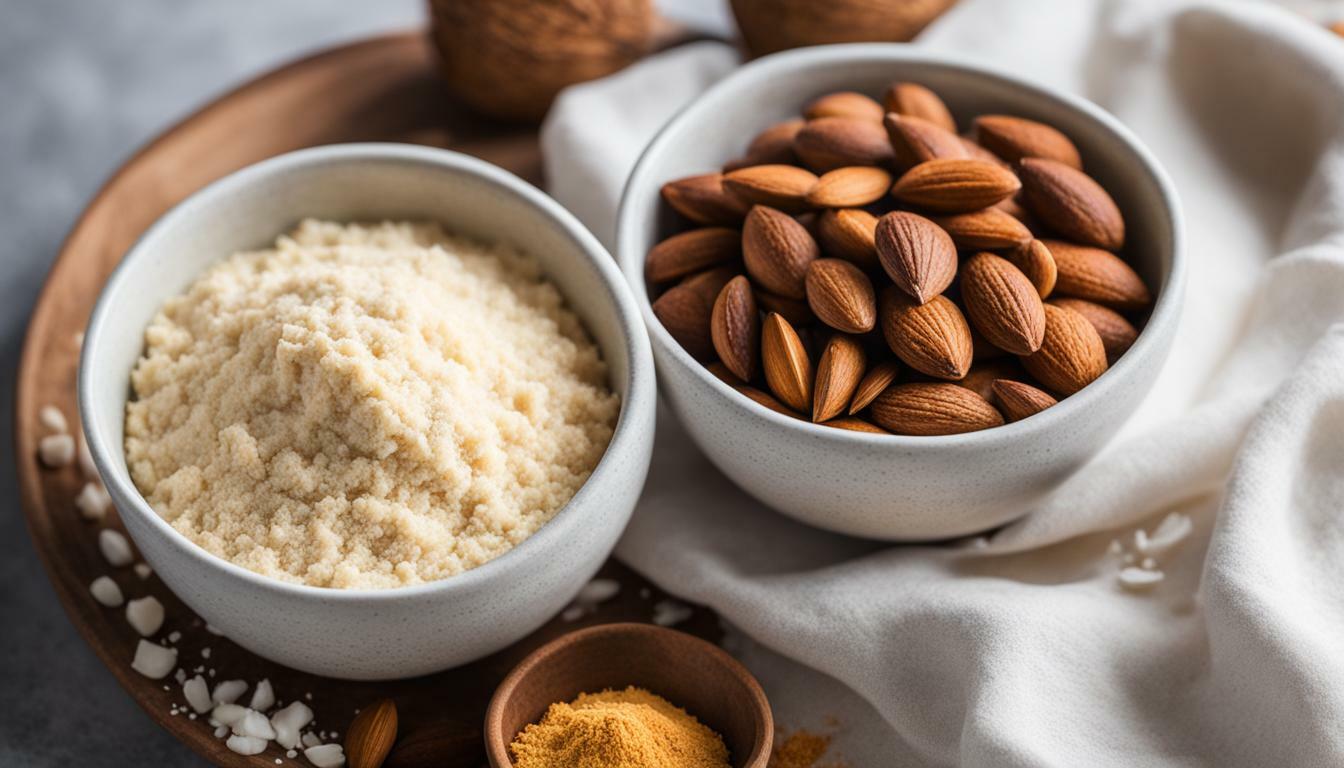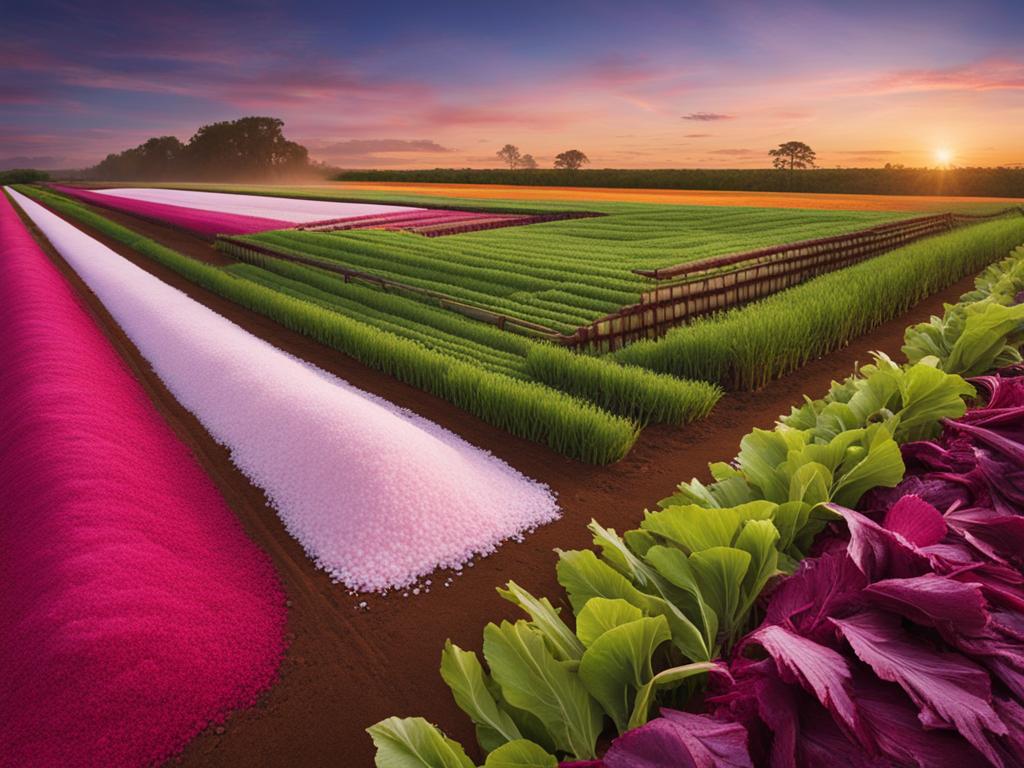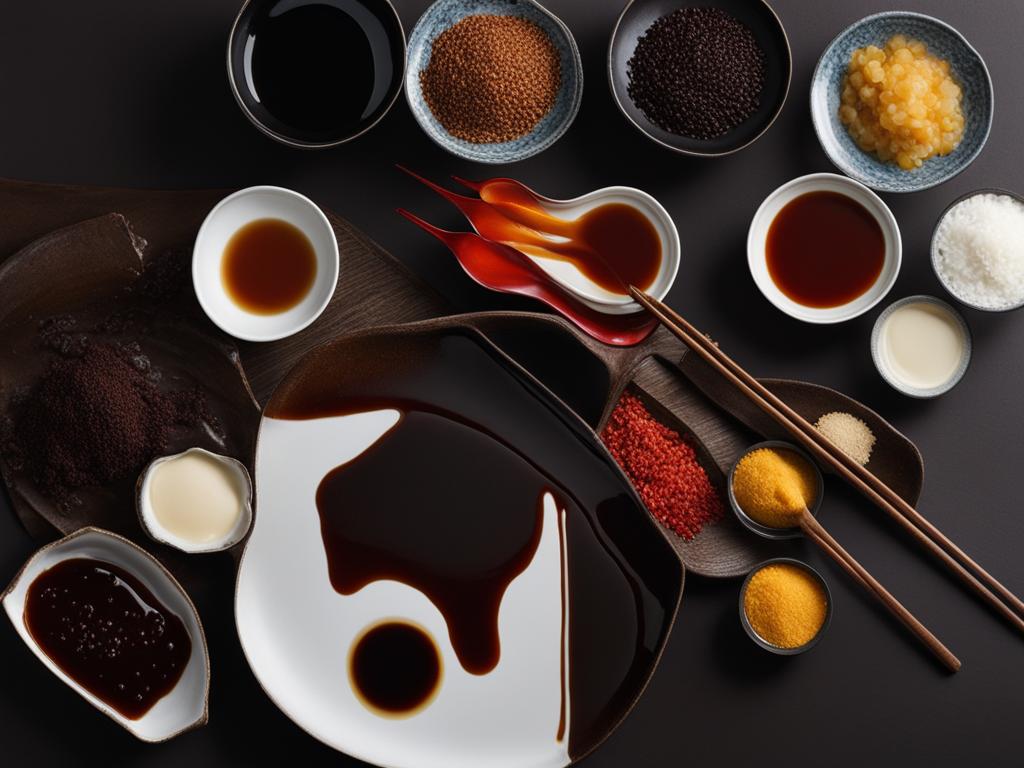Gelatin and pectin are two commonly used gelling agents that play essential roles in various recipes. Understanding the differences between these ingredients is crucial for selecting the right one for your cooking needs. In this article, we will delve into the characteristics, uses, and properties of gelatin and pectin.
Key Takeaways:
- Gelatin and pectin are both gelling agents used in cooking and baking.
- Gelatin is derived from animal collagen, while pectin comes from the cell walls of fruits and vegetables.
- Gelatin is known for its unique gelling properties and is commonly used in desserts like jellies and gummy candies.
- Pectin acts as a natural thickening agent and is often used in jams, jellies, and fruit preserves.
- Understanding the differences in their gelling ability is crucial for choosing the right ingredient for specific recipes, including vegan options.
Gelatin: Definition, Composition, and Uses
Gelatin is a protein derived from collagen found in animal connective tissues. It is known for its unique gelling properties and is commonly used in the preparation of desserts like jellies, marshmallows, and panna cotta. Gelatin is also widely used in the production of gummy candies. Its composition primarily consists of proteins, particularly collagen, which is rich in amino acids such as glycine, proline, and hydroxyproline.
Gelatin finds applications not only in the food industry but also in the pharmaceutical and cosmetic industries. In the pharmaceutical industry, it is used as a binding agent, stabilizer, or thickener in various medications and supplements. In the cosmetic industry, gelatin is used in the formulation of skincare products, such as face masks and lotions, due to its skin-nourishing properties.
Overall, gelatin is a versatile ingredient that adds texture and stability to a wide range of products, making it a valuable component in the culinary, pharmaceutical, and cosmetic industries.
Gelatin: Production and Composition
Understanding the production and composition of gelatin is essential for uncovering the unique properties it brings to culinary creations. Gelatin is derived from animal collagen, which undergoes a meticulous process before it becomes the versatile ingredient we know today. To produce gelatin, animal parts rich in collagen, such as skin, bones, and tendons, are first boiled to extract the collagen. This extracted collagen is then purified and dried into a powdered form for easy use in various recipes.
The composition of gelatin primarily consists of proteins, with collagen being the dominant protein present. Collagen is rich in amino acids like glycine, proline, and hydroxyproline, which contribute to the distinctive properties of gelatin. These amino acids are responsible for gelatin’s exceptional gelling ability, allowing it to form a gel-like structure when combined with water or other liquids. This unique property makes gelatin a valuable ingredient in creating desired textures in desserts, sauces, and other culinary creations.
To visually summarize the production and composition of gelatin, refer to the table below:
| Production | Composition |
|---|---|
| Boiling animal parts (skin, bones, tendons) | Primary protein: Collagen |
| Purification and drying | Amino acids: Glycine, Proline, Hydroxyproline |
| Gelatinous texture when combined with liquids |
Gelatin’s production and composition contribute to its wide range of culinary applications. Whether it’s giving desserts that delightful jiggle or providing stability to sauces and foams, gelatin’s properties make it an invaluable ingredient in the kitchen.
Pectin: Definition, Composition, and Uses
Pectin is a natural substance found in the cell walls of fruits and vegetables. It acts as a thickening agent and stabilizer in various food products. Pectin is commonly used in the production of jams, jellies, fruit preserves, and fruit fillings. It also finds applications in the food industry to enhance the texture and stability of products like yogurt and baked goods.
The composition of pectin includes complex carbohydrates, particularly galacturonic acid. It possesses gelling properties and water-holding capacity, making it ideal for creating the desired consistency and texture in jams and jellies. Pectin is typically extracted from fruits by crushing them and heating them to break down the cell walls, followed by the addition of calcium to help the pectin molecules form a gel-like structure.
In the food industry, pectin is widely used as a natural thickening agent and stabilizer due to its ability to improve the viscosity and texture of products. It helps to create a gel-like consistency in jams and jellies, allowing them to set properly. Pectin is also used in the production of low-sugar or sugar-free jams and jellies, providing the desired thickness and texture without the need for excessive amounts of sugar.
Overall, pectin plays a crucial role in the production of various food products, particularly jams, jellies, and fruit preserves. Its unique properties make it a valuable ingredient in the food industry, providing texture, stability, and improved mouthfeel to a wide range of products.
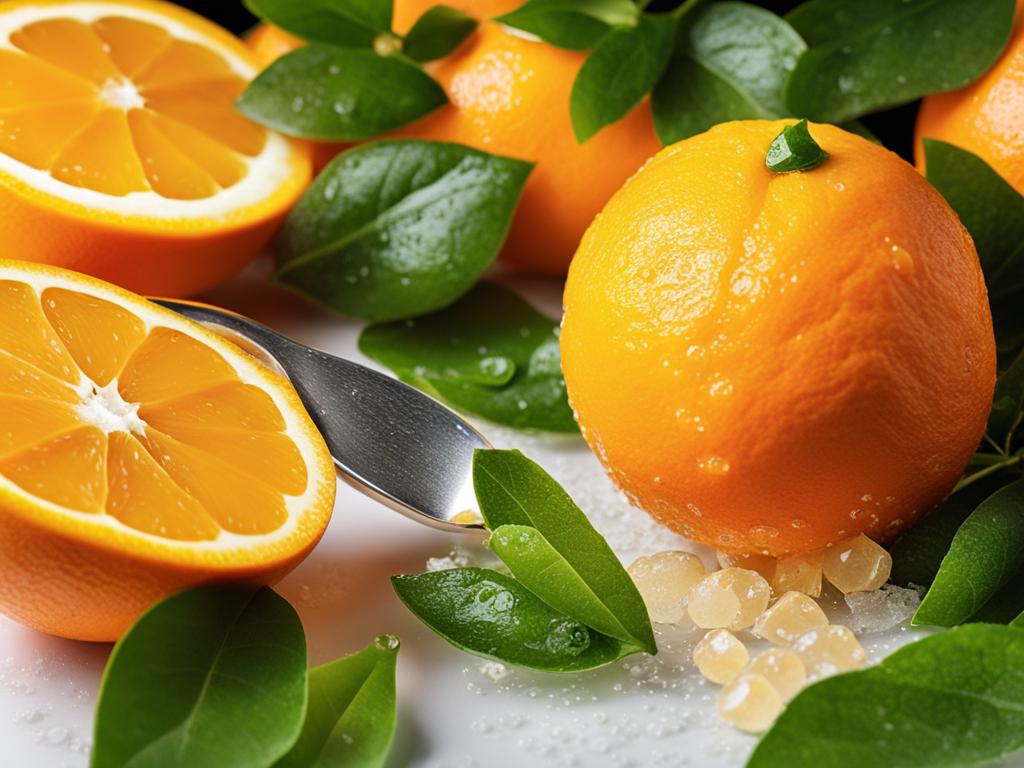
Pectin: Production and Composition
Pectin production involves a series of steps to extract this natural substance from fruits. The process begins by crushing the fruits, such as apples, citrus fruits, or berries, to release the pectin from their cell walls. The crushed fruit is then heated, which helps break down the cell walls and release the pectin further. Calcium is added to the heated mixture, which helps the pectin molecules form a gel-like structure. The concentration of pectin is highest when the fruit is at the just-ripe stage, making it the ideal time for pectin extraction.
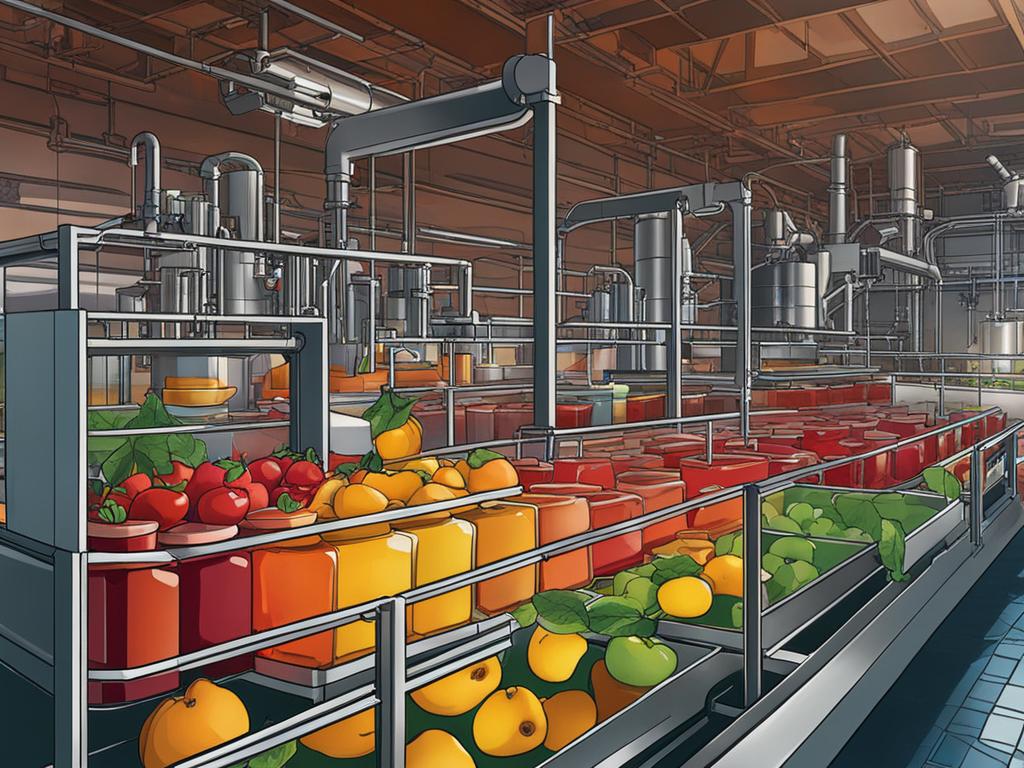
The composition of pectin consists of complex carbohydrates, primarily galacturonic acid, which gives pectin its gelling properties. It also contains other sugars and small amounts of protein. Pectin has a unique ability to form a gel when combined with sugar and acid, making it an excellent thickening agent for jams, jellies, and fruit preserves. Additionally, pectin has a high water-holding capacity, which contributes to the desired texture and stability of food products.
Overall, understanding the production and composition of pectin is essential in harnessing its properties and incorporating it into various culinary applications. Whether it’s making homemade jam or enhancing the texture of yogurt, pectin plays a crucial role in creating delicious and visually appealing food products.
Gelatin vs Pectin: Key Differences
Gelatin and pectin are both commonly used gelling agents in cooking and recipes, but they have several key differences. Understanding these differences can help you choose the right ingredient for your specific culinary needs. Here are the main contrasts between gelatin and pectin:
Source:
Gelatin is derived from animal collagen, which is found in the connective tissues of animals. On the other hand, pectin is derived from the cell walls of fruits and vegetables. This difference in source makes gelatin unsuitable for vegan or vegetarian recipes, while pectin is a popular choice for those following plant-based diets.
Gelling Mechanism:
Gelatin forms a gel-like structure when mixed with liquid, giving it its characteristic texture. This gelling ability is due to its proteins, particularly collagen, which have the unique property of forming a gel when cooled. Pectin, on the other hand, works by absorbing water and forming a gel-like structure through a process called gelation. It acts as a natural thickening agent without the need for cooling.
Applications:
Gelatin is commonly used in desserts like jellies, marshmallows, and gummy candies, where its gelling properties create the desired texture. It is also used in the pharmaceutical and cosmetic industries as a binding agent and stabilizer. Pectin, on the other hand, is primarily used in jams, jellies, fruit preserves, and fruit fillings, where it acts as a natural thickening agent. It is also used in the food industry to enhance the texture and stability of products like yogurt and baked goods.
In summary, gelatin and pectin differ in their sources, gelling mechanisms, and applications. While gelatin is derived from animal collagen and forms a gel-like structure when cooled, pectin is derived from fruits and vegetables and works by absorbing water to create a gel-like texture. Understanding these differences can help you choose the right ingredient for your specific cooking and recipe needs.

Gelatin and Pectin: Culinary Uses and Applications
Gelatin and pectin are versatile ingredients that find a wide range of uses in the culinary world. Gelatin is often utilized in creating delicious and visually appealing desserts. It is commonly found in desserts like jellies, mousses, panna cotta, and gummy candies. As a gelling agent, gelatin provides the desired texture and consistency that makes these desserts so enjoyable. Its ability to form a gel-like structure when mixed with liquids is crucial in achieving the perfect results.
Pectin, on the other hand, is primarily used in the production of jams, jellies, and fruit preserves. Its natural thickening properties make it an ideal choice in creating the desired spreadable texture for these products. Pectin acts as a stabilizer and enhances the flavor and texture of fruits. It helps to achieve the perfect consistency, ensuring that the jams and jellies are not overly runny or too thick.
These ingredients also play a role in cooking. Gelatin can be used to thicken gravies, sauces, and soups, adding body and richness to the dishes. Pectin, with its thickening abilities, can also be employed in savory dishes where a denser texture is desired, like glazes for roasted meats or thick sauces for savory pies.
For those following a vegan or vegetarian lifestyle, gelatin may not be an option due to its animal-derived nature. However, there are alternative gelling agents available that can provide similar results in vegan recipes. Agar-agar, made from seaweed, is commonly used as a vegan substitute for gelatin. Additionally, some fruits naturally contain pectin, making it a suitable choice for vegan recipes that require gel-like structures.
Gelatin and Pectin: Culinary Uses and Applications
| Gelatin | Pectin |
|---|---|
| Mousses | Jams |
| Jellies | Jellies |
| Panna cotta | Fruit preserves |
| Gummy candies | Fruit fillings |
| Thickening gravies and sauces | |
| Stabilizer in dairy products and frozen foods | |
| Enhancing texture and stability in yogurt and baked goods |

In summary, gelatin and pectin have their unique applications in the culinary world. Gelatin finds its place in desserts, while pectin shines in creating fruit-based spreads. Both ingredients can also be used in cooking to thicken and enhance flavors. Understanding the uses and characteristics of gelatin and pectin can help chefs and home cooks make informed decisions when selecting the right ingredient for their recipes.
Conclusion
In conclusion, gelatin and pectin are two distinct gelling agents with unique properties and applications in the culinary world. Gelatin, derived from animal collagen, is widely known for its ability to create gel-like structures and is commonly used in desserts and gummy candies. On the other hand, pectin, derived from fruits and vegetables, functions as a natural thickening agent and is primarily utilized in jams, jellies, and fruit preserves.
The major differences between gelatin and pectin lie in their sources, gelling mechanisms, and culinary uses. Gelatin, being derived from animal collagen, has a wide range of applications in desserts and provides a unique texture to various sweet treats. Pectin, obtained from fruits and vegetables, is renowned for its ability to thicken and stabilize food products like jams and jellies. Understanding these differences is essential for selecting the appropriate gelling agent for specific recipes and dietary preferences.
Whether you’re whipping up a delectable dessert or preparing a fruity spread, considering the differences between gelatin and pectin will help you achieve the desired texture and consistency in your recipes. So, next time you’re in the kitchen, choose wisely between gelatin and pectin to create mouthwatering creations that will impress your taste buds and those of your loved ones.
FAQ
What is gelatin?
Gelatin is a protein derived from animal collagen found in connective tissues.
What is pectin?
Pectin is a natural substance found in the cell walls of fruits and vegetables.
What are the uses of gelatin?
Gelatin is commonly used in desserts like jellies, marshmallows, and gummy candies. It is also used as a binding agent, stabilizer, or thickener in the pharmaceutical and cosmetic industries.
What are the uses of pectin?
Pectin is primarily used in the production of jams, jellies, fruit preserves, and fruit fillings. It is also used to enhance the texture and stability of products like yogurt and baked goods.
How is gelatin made?
Gelatin is made by boiling animal parts rich in collagen, such as skin, bones, and tendons. The extracted collagen is then purified and dried into a powdered form.
How is pectin made?
Pectin is extracted from fruits by crushing them and heating them to break down the cell walls. Calcium is added to help the pectin molecules form a gel-like structure.
What are the key differences between gelatin and pectin?
Gelatin is derived from animal collagen, while pectin comes from fruits and vegetables. Gelatin is known for its gelling properties and is commonly used in desserts, while pectin acts as a natural thickening agent and is commonly used in jams and jellies.
What are the culinary uses of gelatin and pectin?
Gelatin is commonly used in desserts like jellies, mousses, marshmallows, and gummy candies. It can also be used to thicken gravies and sauces and act as a stabilizer in dairy products and frozen foods. Pectin is primarily used in jams, jellies, fruit preserves, and fruit fillings.
 Skip to main content
Skip to main content
